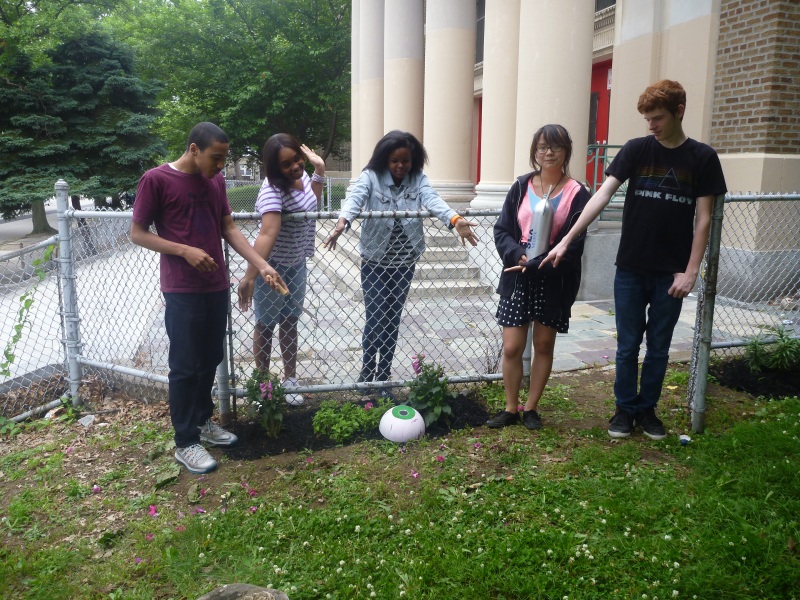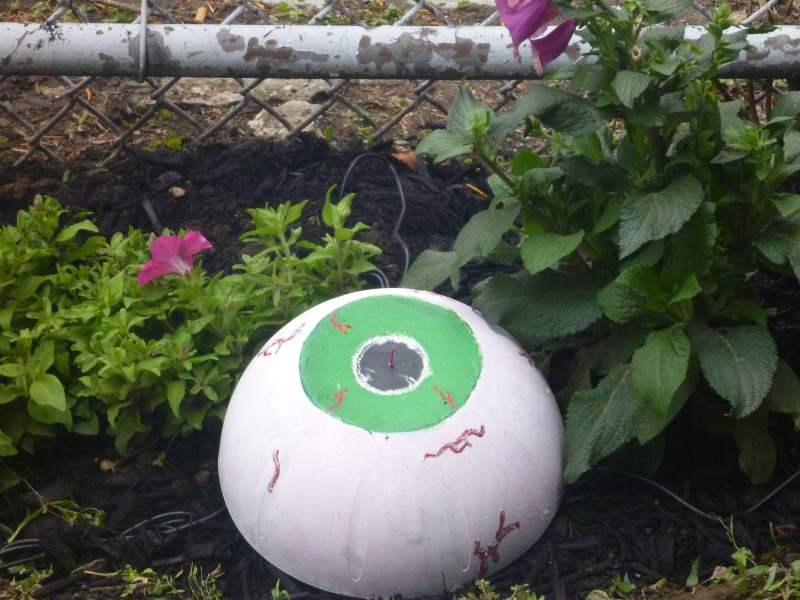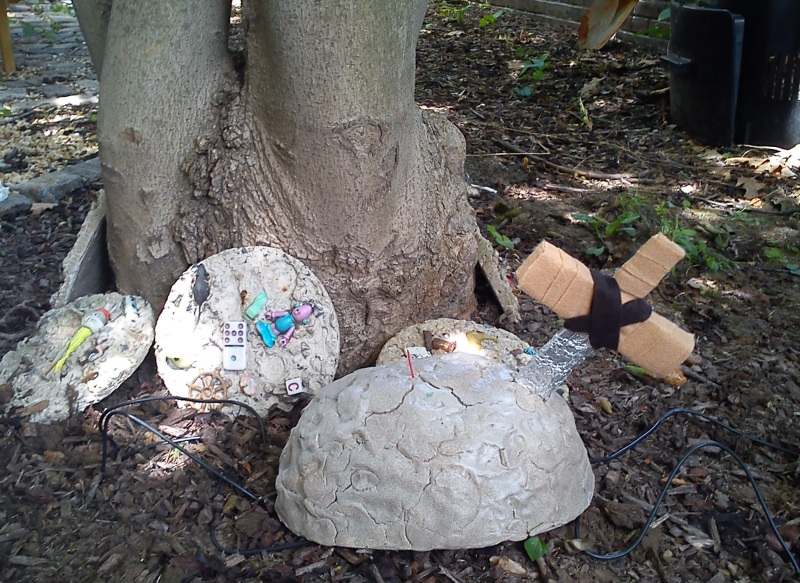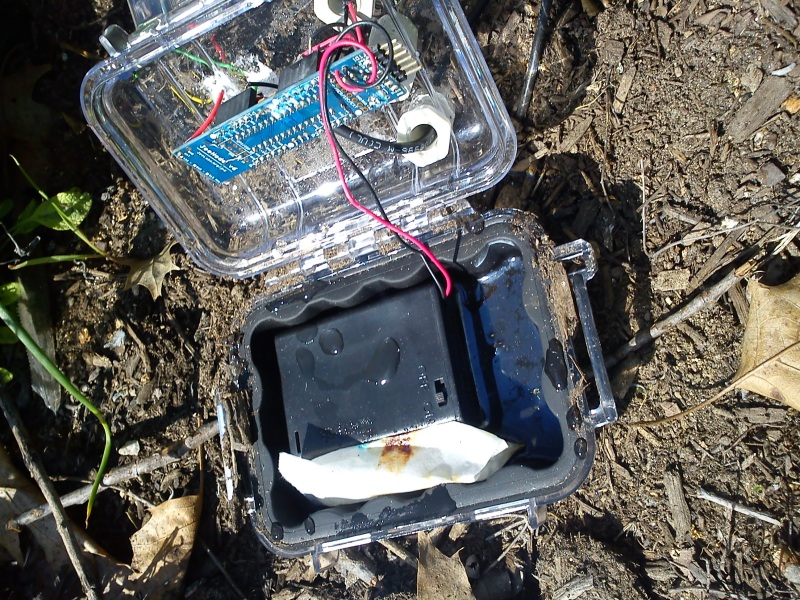Fourth Installation: SLA Beeber
Students at Science Leadership Academy’s Beeber campus installed Root Kit #4 yesterday, capping off an 8-week minicourse of designing and building the sensor housing, soldering the kit’s circuit board, testing radio signal strength, and troubleshooting along the way. Remember the waterlogged sensors from a few posts ago? We did an immersion test and found out water was leaking into the Pelican case at the base of the cable glands:
We used a combination of Rust-oleum Leak Seal spray (not that effective, smells toxic) and silicone caulk (it works, but it’s messy-looking) to waterproof the case. After connecting to the school’s network and testing signal strength from the flowerbed to the 3rd floor office, students buried the soil sensors:
The students went with the eyeball housing for their site, and designated the rocketship design for a future installation at the Franklin Institute this summer (details to come). We poked a pinhole into the eye’s center to allow the antenna to peek out:
Thank you to all the SLA students, Mr. Sokoloff, Darya Drahun and Sandy Sorlien—mission accomplished!








